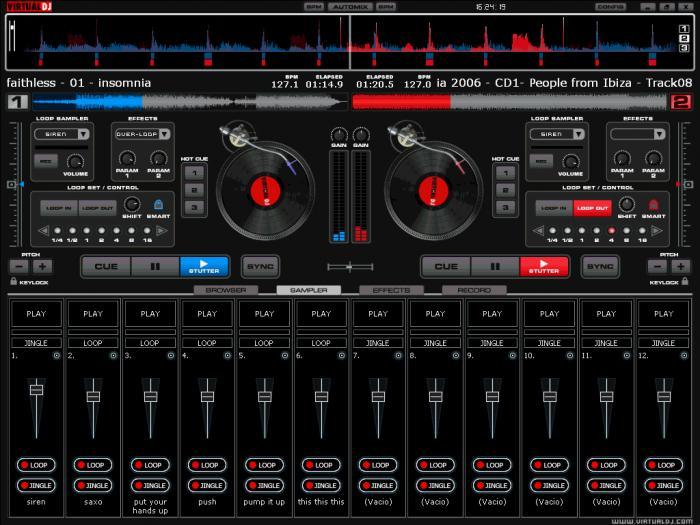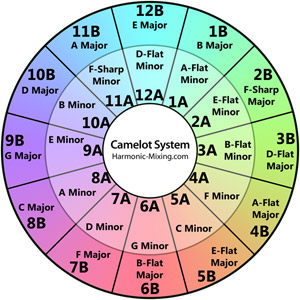6. Voices Inside My Head: One of the things that surprised me most about watching some laptop DJs was that they didn’t need headphones when lining up their next track. Cueing is enabled by the use of software such as Virtual DJ, which assigns color codes to a track’s waveforms (in this case, one track in blue, the other in red, see below) that run together or parallel to sync up and beat match their tracks according to the peaks and valleys in the forms. This “waveriding” has likely evolved from the fact that most laptops have a one output sound card (and not always a very good one at that, which can impact sound quality), which is of course sending the signal to the external speakers. Anyone who’s learned on vinyl will likely find this method off-putting or perhaps maddening, and for those folks the addition of a sound card that disregards the computer’s built-in sound and replaces it with 2 high-quality stereo outputs that allow you to hear both the track playing on your speakers, and the next track in your headphones, will enable you to mix in a more traditional way. It is connected to your computer (usually by a USB cable) and usually powered by the PC. Many digital Midi controllers will have a sound card built in. I couldn’t comfortably mix with wave forms alone, based on my training by ear, but I’ve heard DJs who’ve learned that way who do just fine by it, so your past experience will probably tell you what’s best for you.

7. Suzi Lane Is On Line 2: Based on an informal survey of some fellow DJ’s, harmonic mixing, or mixing songs in the same or complimentary keys to decrease dissonance in one’s mixes is still not in everyday use, and for some I’ve spoken with, will perhaps never be adopted. Since a lot of bigger name DJ’s use it, and because it’s especially useful in the creation of mashups, I thought it was interesting enough to warrant a little more attention. The Wiki page provides a good overview, but to that I’d like to add another component to the discussion via something called the Camelot wheel, developed by Mark Davis for Mixed In Key software. Song keys have been converted to a 2-tiered wheel with a clocklike 12 positions, the compatible keys adjacent to one another as seen here:

The full system is explained at the link, and while the folks at Mixed In Key would certainly be pleased if you bought their software to analyze your tracks, free software such as Virtual DJ will also analyze your tracks and give you both their key and their Camelot wheel equivalent, so check out your existing software and see if it already does it for you.
8. Add Your Voice To The Sound Of The Crowd: In these lean times for nightlife venues, if you’re able to attract a crowd who’s likely paid a cover or are at least shelling out money for drinks, make it worth their time and money to leave the house. Never assume they know less than you do about the genre of music you’re playing, because there’s a good chance some of them know a helluva lot more than you, so hold them in contempt at your own risk. If you build a regular clientele, they’ll get to know you and your tastes, and the chance to “educate” each other can be based on mutual respect, not on some outdated teacher/student dynamic. And be diplomatic but firm about taking requests if they’re really outside the realm of your typical set.
These are at best initial observations, and there are myriad issues unique to each DJ that are not addressed here, or that may benefit from the insight of others currently working in the field who have also transitioned from vinyl to digital jockeying, so we’d love to hear from you, and even do a follow up column with your advice.
______________
Brian Halligan is DJ working in Boston MA: See how much of his own advice the author follows or ignores on November 18th and 26th at Cirque
[/et_pb_text][/et_pb_column]



